One month of Israel-Hamas war: How it began, where it is going
One month of Israel-Hamas war: How it began, where it is going
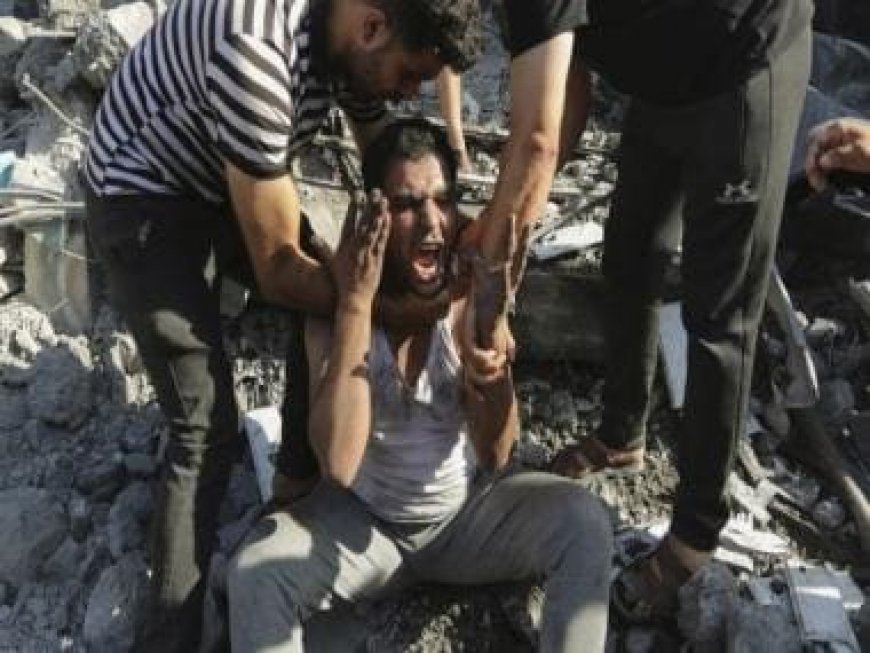
It’s a month since the Palestinian militant group Hamas launched surprise attacks on Israel, killing more than 1,400 people and kidnapping more than 200 others. In retaliation, the Israeli military launched airstrikes which have reduced the Hamas-controlled Gaza Strip to rubble. According to the health ministry, more than 9,700 people have been killed in the strip since 7 October.
The Israel-Hamas war has created a divide in the world and there is fear that the conflict will widen, leading to speculation of World War III. Today, the Jewish nation finds itself increasingly isolated with even its biggest ally United States calling for a “humanitarian pause”. There is also a growing call for a ceasefire but Jerusalem refuses to relent.
On the weekend, the Israeli military military said it had broken through Hamas’s frontlines of defence in the northern part of the enclave with a commander saying that its troops were at “the gates of Gaza City”.
As the war enters its 31st day, we take a look at what has unfolded since the dastardly Hamas attack on 7 October.

The Hamas attack
At dawn on 7 October, the sabbath and a Jewish holiday, rockets rained down on Israel from Gaza and hundreds of Hamas fighters infiltrated southern Israel by land, sea and air. The Palestinian militant group claimed to have fired 5,000 rockets in 20 minutes, overwhelming Israel’s sophisticated Iron Dome air defence system.
Meanwhile, Hamas militants who entered the Jewish nation, went on a rampage killing 1,400 people, mostly civilians, according to Israeli officials. Among those massacred were 270 mainly young people at a music festival and hundreds more, including babies, in communities near the Gaza border.
The militants abducted more than 240 people Israelis and foreigners, officials say.
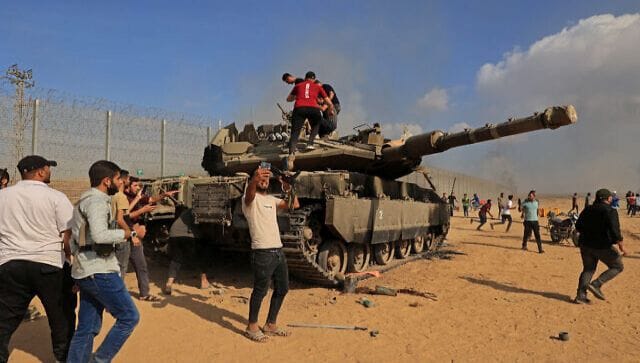
Israeli Prime Minister Benjamin Netanyahu spoke of “savagery not seen since the Shoah”, Hebrew for the Holocaust. He vowed to “crush” Hamas, designated a “terrorist organization” by the United States, Britain, Israel and the European Union.
Israel declares war
Israel was quick to retaliate, pounding Gaza with air strikes even as its forces battled Hamas fighters still inside the country. It formally declared war on the Palestinian militant outfit on 8 October as tanks and personal carriers moved near the border, setting the stage for a major military operation.
On 9 October, Israel announced a “complete siege, cutting off power, food deliveries, and then water supplies to the 2.4 million residents of Gaza. The following day, it retook control of the Gaza border.
On 13, October Israel urged the citizens of northern Gaza to move south within 24 hours. Hundreds of thousands of Palestinians were forced to flee the relentless Israeli bombardment. The Arab League denounced a “forced transfer”.
Offing of a wider conflict in West Asia
The airstrikes on Gaza enraged the Arab nations. Further north, Israel exchanged cross-border fire with Lebanon’s Hezbollah, a Hamas ally also backed by Iran.
In southern Lebanon, a Reuters video journalist was killed on 13 October and six journalists from AFP, Reuters and Al Jazeera were wounded in a strike. Lebanon held Israel responsible.
The deadly hospital strike
On 17 October, a deadly strike hit Gaza’s Al-Ahli hospital. The Hamas health ministry said that at least 471 people were killed. However, US intelligence sources said “100 to 300” people died.
Hamas blamed Israel for the bombing. However, Israel denied responsibility and blamed a misfired rocket by Islamic Jihad militants. The US backed Israel’s claim and its intelligence also said that Palestinian militants were responsible for the hospital explosion.
But the Arab world was not convinced and thousands staged anti-Israel protests.
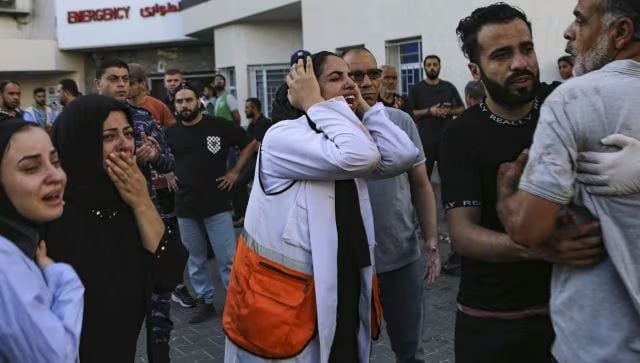
Joe Biden visits Israel
US president Joe Biden landed in Tel Aviv on 18 October, hours after the hospital bombing. While the visit was planned before the strike, the incident upended the American leader’s plans.
While Biden met Israeli prime minister Benjamin Netanyahu in Tel Aviv, his visit to Amman in Jordan was cancelled after the Gaza hospital blast. Jordan cancelled a summit the country was to host with Biden and the Egyptian and Palestinian leaders.
Hostages freed
On 20 and 22 October, four hostages, all women, were released by Hamas. The first to be freed were two Americans J Judith Raanan and her daughter Natalie Raanan, who were kidnapped during the attack on southern Israel.
Hamas’s armed wing, the Ezzedeen al-Qassam Brigades, freed the hostages “for humanitarian reasons” after Qatari mediation efforts, its spokesman Abu Ubaida said.

Days later, on 28 October, Hamas said it was prepared to release hostages in return for Palestinian prisoners in Israeli jails.
On 30 October, an Israeli soldier, also a woman, was rescued in a ground operation by Israeli forces.
The first delivery of aid
In Gaza, a humanitarian crisis continues to unfold. The Strip has run out of clean water. The stock of food and medicines was depleting as Israel cut off supplies.
After weeks, the first humanitarian aid trucks entered via Gaza’s Rafah border crossing with Egypt on 21 October. More than 370 trucks entered by 3 November.
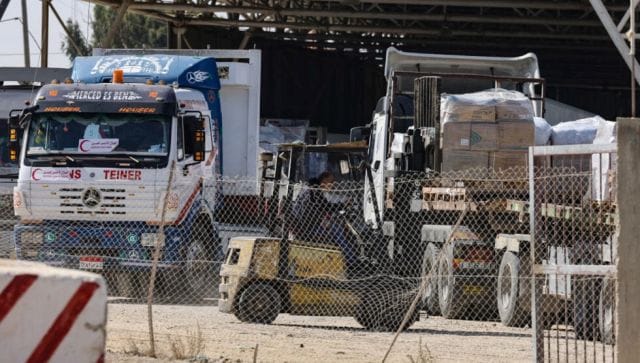
Airstrikes intensify
On October 21, Israel intensified its airstrikes on Gaza.
The next day, Iran warned that the West Asia conflict could spiral out of control if Israel did not stop. Iran’s foreign minister Hossein Amir-Abdollahian said that the US was “to blame” for providing military support to Israel.
Israel vs UN chief
UN Secretary-General Antonio Guterres on 24 October denounced “the clear violations of international humanitarian law” in Gaza. His comments that attacks on Hamas “did not happen in vaccum” angered Israel, which called for the UN chief’s resignation and apology.
At least 1.4 million Palestinians have fled their homes since the war began, according to the UN.
Israeli tanks roll into Gaza
On 26 October, Israeli tanks entered Gaza for several hours. The next day, the UN General Assembly called for an “immediate humanitarian truce”.
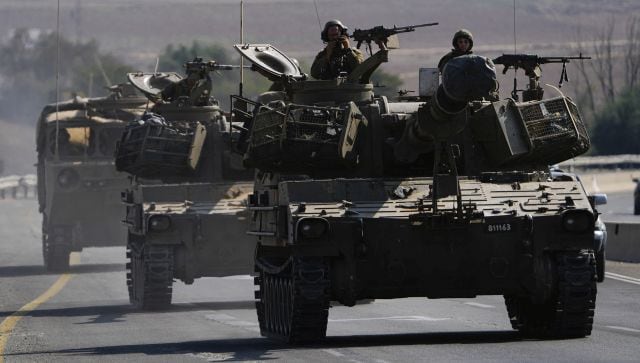
The next day, the Israeli army said that it had “expanded” its ground operations inside Gaza. Netanyahu announced “the second stage of the war” aimed at destroying Hamas’s military and leadership capabilities and rescuing the hostages. A ceasefire “will not happen”, he declared.
On 31 October, Israeli forces reported “fierce battles” inside Gaza.
Refugee camps bombed
Between 31 October and 3 November Israel’s military hit northern Gaza’s Jabalia refugee camp, which is the largest in the strip, three times. According to the Hamas-run government, at least 195 Palestinians were killed in the strikes on the camp.
Israel defended the attack saying that the strikes were on Hamas infrastructure that “had taken over civilian buildings”. The Israeli military also claimed that it killed dozens of militants including a key Hamas commander for northern Gaza.
Four UN schools sheltering displaced people are also hit. UN-mandated human rights experts say “time is running out to prevent genocide and humanitarian catastrophe in Gaza”.
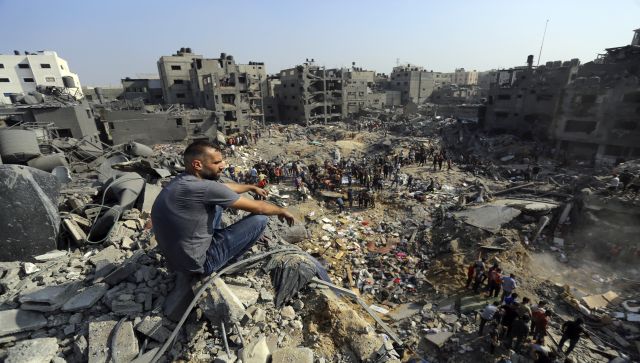
The evacuations to Egypt
On 1 November, Egypt opened the Rafah border crossing. Dozens of wounded Palestinians and hundreds of foreigners and dual nationals left the enclave.
Egypt said it would help evacuate “about 7,000” foreigners and dual nationals.
Gaza City surrounded
After almost a week of ground fighting in northern Gaza, Israel’s army announced on 2 November that it surrounded Gaza City. The next day, Israel started sending back thousands of Palestinian workers stuck in Israel since hostilities started.
US calls for ‘humanitarian pause’
In Tel Aviv, US Secretary of State Antony Blinken reiterated that Israel had the “right” and “obligation” to defend itself, but urged it to protect Palestinian civilians in Gaza. He said Israel will only gain security through the creation of a Palestinian state, reports AFP.
On 4 November, Blinken reaffirmed the US support for “humanitarian pauses” in the fighting, an idea Netanyahu has rejected.

The big Hezbollah warning
Hezbollah chief Hassan Nasrallah warned Israel against attacking Lebanon, saying “all options” are on the table, including “total war”.
In his first speech since war broke out, the head of the powerful Iran-backed movement warned that “all options” were open for an expansion of the conflict to Lebanon. “America is entirely responsible for the ongoing war on Gaza and its people, and Israel is simply a tool of execution,” Nasrallah said in a televised broadcast, calling the conflict “decisive”.
Blinken is back
The US secretary of state Antony Blinken is on a diplomatic tour of West Asia. He is in Turkey. Speaking earlier in Baghdad, Blinken said regional leaders would ‘welcome”a humanitarian pause in Gaza, reports the BBC.
This is his second trip to the region since the war began.
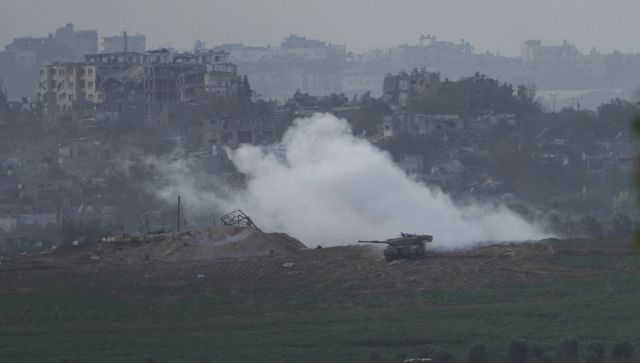
Next move: Entering Gaza City?
Israeli chief of staff Lieutenant General Herzi Halevi visited troops on the ground inside Gaza on 4 November, a military spokesperson said. Israeli television channels broadcast images of Halevi visiting troops inside Gaza.
On 6 November, Israel’s military announced it has divided the besieged coastal strip into two. “Today there is north Gaza and south Gaza,” Rear Adm. Daniel Hagari told reporters. Israel “will continue to attack strongly and continue to intensify our ground operation in the northern Gaza Strip and greater Gaza City”.
Israeli forces are expected to enter the main city in the enclave in the next 48 hours, say reports.
With inputs from agencies
What's Your Reaction?



























































